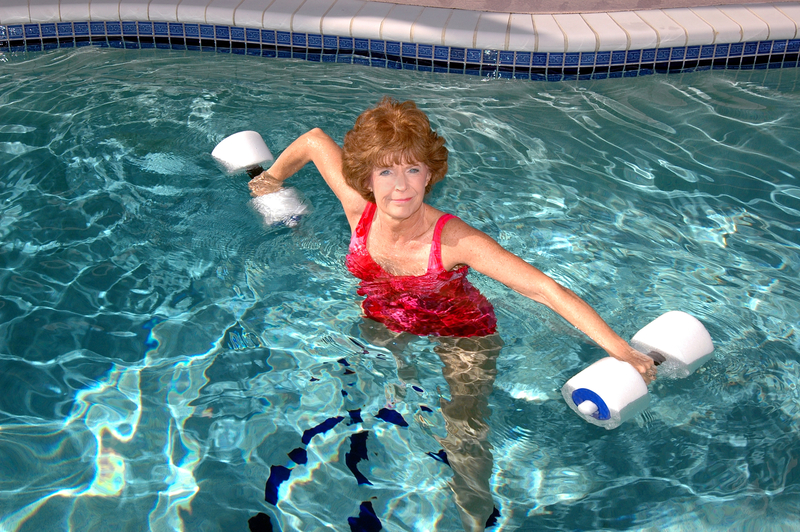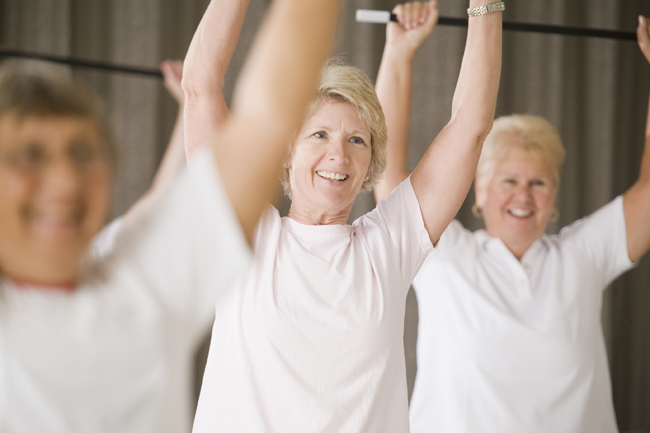Senior Citizen Exercises: Sample Workout Plans
Looking for motivation to get on—and stay on—a regular exercise plan? Start simple by making a routine out of these sample senior citizen exercises.
An estimated 80 percent of American adults do not get sufficient exercise, according to the Centers of Disease Control and Prevention. At any age, the motivation to keep up a program tends to come and go. For the senior citizen, exercises become especially important for not only to stay healthy, but to maintain mobility and independence.
Experts recommend that you devise a simple, convenient, and fun exercise routine, one that you can look forward to. You should also aim to exceed your own expectations.
The most common factors of a successful exercise program are:
- Daily routines that accommodate exercise.
- Anticipation of positive feelings associated with exercise—seeing exercise as an “I get to” activity rather than an “I have to” activity.”
- Being accountable to someone else, like a friend or a running mate.
If you’ve been sedentary too long, now is the time to change your mindset and adopt a new routine. It can be simple one; to get you started, we present these easy-to-adopt senior citizen exercises and programs.
Sample Program No. 1: Walking
For each activity, stop or slow down if you become uncomfortably tired or sore. Begin walking every other day; try to work up to at least five days per week. (See also our post “The Benefits of Walking.”)
ACTIVITY AND TARGET TIME
- Warm-up, slow to moderate pace: 5 minutes
- Walk at brisk pace: 5 minutes or less
- Walk slowly or rest: 3 minutes
- Walk at a brisk pace: 5 minutes
- Cool-down, moderate-slow pace: 5 minutes
Sample Program No. 2: Swimming
This program is recommended for beginning swimmers or those who have been away from the activity for an extended period of time. Increase the intensity and duration each week only if you are having no pain and minimal-to-no fatigue. Schedule your swims three to four times per week on non-consecutive days to get adequate rest between sessions.
ACTIVITY AND TARGET TIME
- Warm-up (jogging, calisthenics, dynamic swimming-related stretches): 5–10 minutes
- Freestyle, breaststroke, or backstroke: 10 minutes
- Kicking with kickboard on back or stomach: 5 minutes
- Cool-down: 5–10 minutes (walking, dynamic stretches, slow-pace lap swimming)

Besides the water aerobics our contributor lists here, you might bring light weights into the pool for resistance training.
Sample Program No. 3: Water Aerobics
Try a variety of exercises that engage the upper and lower body, and use only the ones that seem like a good match. It’s okay to change the routine from day to day or week to week, as long as you hit your target heart rate zone and are using all the major muscle groups. However, the advantage of repeating some exercises is to be able to measure your progress. Schedule two to three non-consecutive days per week.
ACTIVITY AND TARGET TIME
- Warm-up (jogging, calisthenics, dynamic swimming-related stretches): 5–10 minutes
- Water marching: 5 minutes
- Side steps: 5 minutes
- Karate punch: 5 minutes
- Jumping jacks: 5 minutes
- Cool-down (walking, dynamic stretches, slow-pace lap swimming): 5 minutes
Originally published in May 2016 and updated.



 Exercises For Mobility
Exercises For Mobility  Living with Dementia Means Having a Greater Fall Risk
Living with Dementia Means Having a Greater Fall Risk  Is Walking Good Exercise?
Is Walking Good Exercise? 
Your exercise regimen should begin with a simple, easy plan. Warming up, of course, is key before any activity. The "sit-and-reach" flexibility test is an effective way to stretch your upper and lower body and improve flexibility.
© Ruslan Huzau | Dreamstime.com